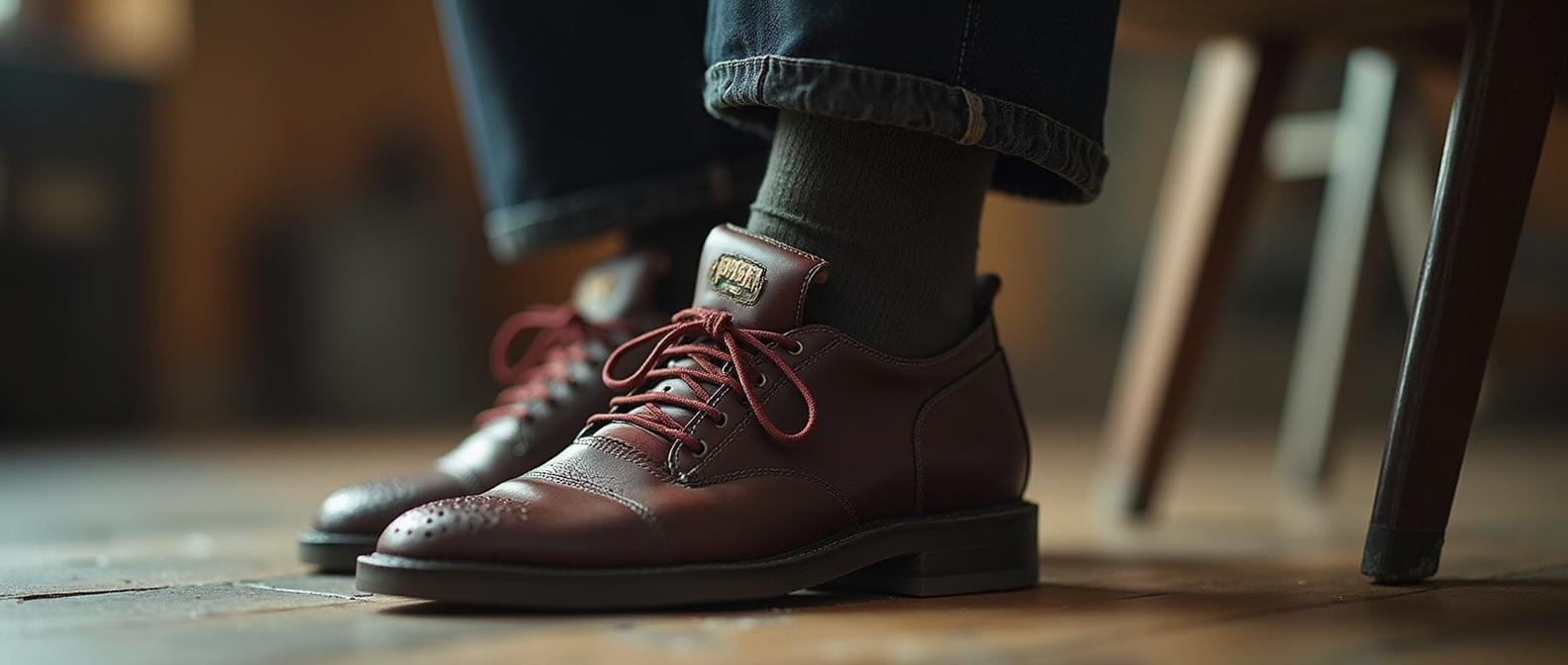Did you know that a professor’s socks can greatly affect their professional look? In the academic world, every detail matters. Socks have become key in a professor’s wardrobe.
University dress codes are getting stricter. This means choosing the right socks is crucial for professors. They want to look polished and credible.
This article will guide professors on picking the perfect socks. We’ll cover traditional and modern sock choices for academics. It’s all about understanding the importance of socks in faculty fashion.
Table of Contents
Understanding Academic Dress Code Standards for Footwear
In academic settings, the rules for formal hosiery and shoes can change a lot. Different departments have their own ideas about what’s right. This shows how campus fashion is always changing.
Traditional Expectations in University Settings
Traditionally, universities want their staff to dress formally. This means dark socks or stockings with leather shoes. It’s all about looking serious and in charge.
Modern Interpretations of Professional Sock Wear
Nowadays, universities are more open to different styles. They let people wear a variety of socks that still look good. This makes the campus feel more welcoming to everyone.
Department-Specific Considerations
Even though things are getting more relaxed, some departments still have their own rules. What you can wear depends on your department. It’s smart to know what’s expected of you.
| Department | Traditional Sock Expectations | Modern Interpretations |
|---|---|---|
| Law | Dark-colored, formal socks | Subtle patterns or color variations, still maintaining a professional appearance |
| Business | Conservative, neutral-toned socks | Increased flexibility in sock styles, including bolder colors and patterns |
| STEM | Emphasis on function over form, with practical sock choices | Growing acceptance of more diverse sock styles, as long as they are still professional |
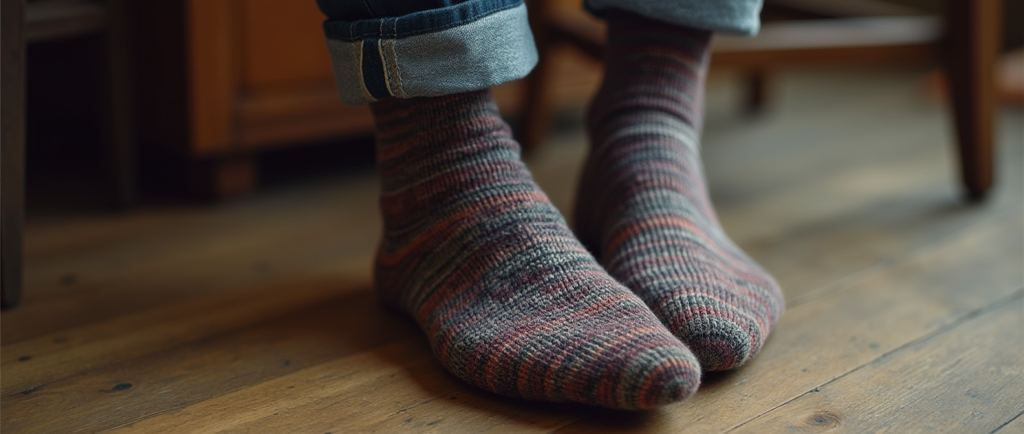
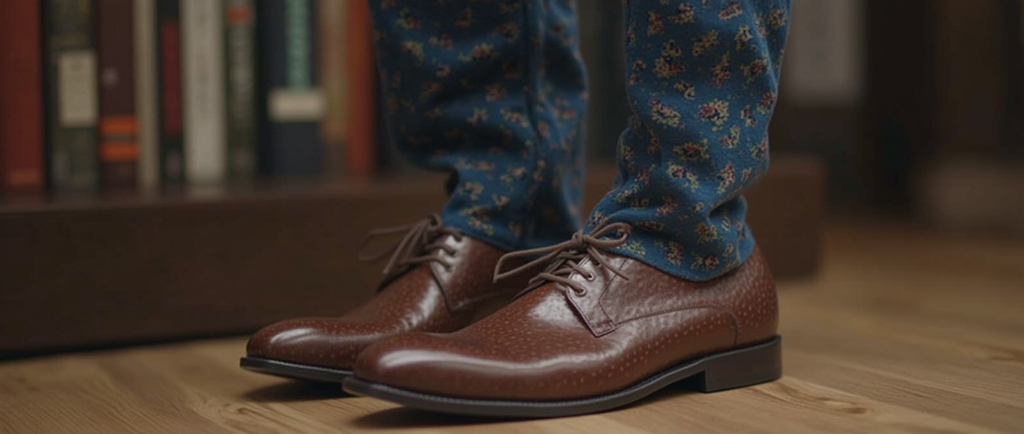
Professor Dress Code Socks: Essential Guidelines and Materials
Choosing the right socks is key for professors aiming for a scholarly look. It’s important to follow certain guidelines and consider the materials used. This ensures a professional appearance.
First, the sock’s fabric is crucial. Go for natural fibers like cotton, wool, or cashmere. They’re not only comfy but also show class. Synthetic blends might be cheaper but don’t breathe as well and last as long.
The sock’s length is also important. Opt for over-the-calf or knee-high socks for a neat look. Ankle-length or no-show socks might be easy but don’t cover enough and can look unprofessional.
| Sock Material | Durability | Breathability | Comfort |
|---|---|---|---|
| Cotton | Moderate | High | High |
| Wool | High | High | High |
| Cashmere | High | High | Excellent |
| Synthetic Blends | Moderate | Moderate | Moderate |
It’s also important to think about how long the socks will last. Professors are often on their feet a lot. So, choose socks that can handle daily wear and are easy to keep clean.
By picking durable, high-quality socks, professors can look polished and professional. This image is important for both students and colleagues.
Color Coordination and Pattern Selection for Academic Settings
As professors, our sock choice matters a lot. It affects how we look in the classroom. Picking the right colors and patterns for our professor dress code socks can make us look more professional and in charge.
Appropriate Color Combinations for Teaching
For academic attire, stick to classic colors. Blue, gray, black, and burgundy are great. They look polished and refined. Subtle patterns like pinstripes or herringbone add interest without being too bold.
Pattern Guidelines for Different Academic Events
- For everyday teaching, solid or subtle patterns are best. They let your teaching shine.
- At formal events, like conferences, a bolder pattern can be stylish. Yet, it still looks professional.
- At faculty meetings, stick to solid colors or simple patterns. They match your outfit well.
Seasonal Color Considerations
Seasons change, so do sock colors. In cold months, darker colors like burgundy or navy add warmth. In warmer times, light colors like blue or gray are refreshing.
| Season | Recommended Sock Colors |
|---|---|
| Fall/Winter | Burgundy, Forest Green, Navy, Charcoal Gray |
| Spring/Summer | Light Blue, Tan, Khaki, Pale Gray |
Choosing the right colors and patterns for our professor dress code socks boosts our look. It makes us appear polished and professional in and out of the classroom.
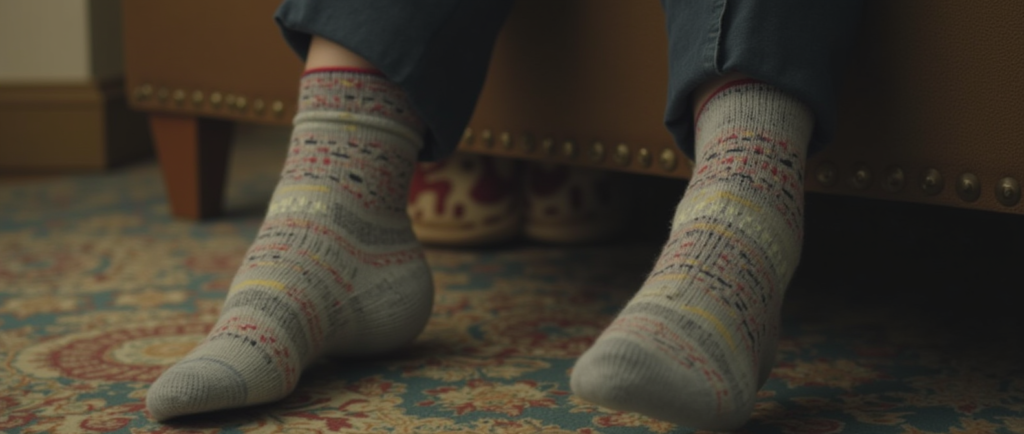
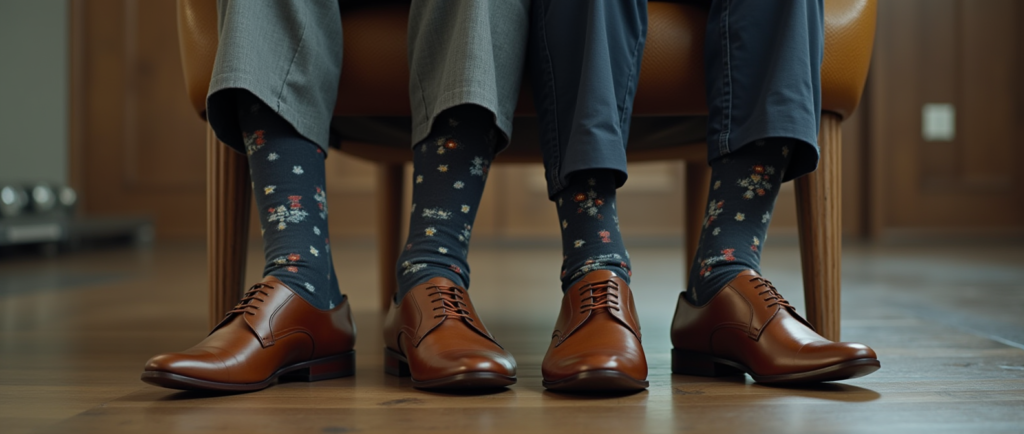
Maintaining Professional Sock Quality and Appearance
Keeping your faculty wardrobe looking sharp is key in the academic world. For formal hosiery, the right care and storage are essential. This helps your socks stay in great shape.
Washing your socks regularly is important. Hand-washing or using a delicate cycle helps keep them looking new. Stay away from harsh detergents and hot water to avoid damage. Also, how you store them can affect their look and life.
- Store socks in a cool, dry place, away from direct sunlight or heat sources.
- Fold or roll socks neatly to maintain their shape and prevent stretching.
- Consider investing in specialized sock storage solutions, such as drawer dividers or hanging racks, to keep your collection organized and easily accessible.
It’s wise to replace formal hosiery every 6 to 12 months. This depends on how much you wear them. Watch for signs of wear like thin spots or fraying. If your socks are no longer up to par, it’s time to get new ones.
“Maintaining the quality and appearance of your socks is a small but important part of projecting a polished and professional image as a faculty member.”
By taking good care of your socks and replacing them when needed, your faculty wardrobe will always look its best. This adds to your refined and put-together academic style.
Conclusion
In the world of academic fashion, choosing the right socks is key. This guide has shown how important it is to know the dress code rules. We’ve looked at what socks to wear and how to keep them looking good.
Professors need to find a balance between following rules and showing their own style. The right socks can make them look credible and unique. This can connect well with students and colleagues.
This article is a helpful guide for professor dress code socks and academic style guide. It helps professors look professional and connect better with their community. By following these tips, professors can improve their image and help their institution shine.
FAQ
What are the traditional expectations for professor socks in university settings?
In traditional academic settings, professors are expected to wear formal socks. These socks should match their professional attire. They usually choose solid-colored socks in neutral tones like black, navy, or grey.
How have modern interpretations of professional sock wear evolved in academic environments?
Modernly, many universities are more open to different sock choices. Professors can now wear bolder colors or patterns. But, they must still look professional and follow their department’s guidelines.
What factors should professors consider when selecting socks for academic settings?
Professors should think about the sock’s fabric, length, durability, and comfort. Natural fibers like wool or cotton are best for their breathability. Socks should cover the ankle or calf to look professional.
How can professors coordinate the colors and patterns of their socks with their overall academic attire?
Professors should match their socks with their outfit. They can pick socks in colors or patterns that complement their clothes. Seasonal colors also play a role, with darker hues in winter and lighter ones in summer.
What steps can professors take to maintain the quality and appearance of their socks?
To keep socks looking good, professors should follow care tips. They should wash them regularly and avoid harsh detergents. Proper storage and replacing worn socks also help keep a professional look all year.
- Spectra Sock for Prosthetic Foot: Comfort, Durability, and Enhanced Mobility
- best Socks for Foot Neuropathy – Shop Comfort and Support
- Do Compression Socks Help Neuropathy? Find the Right Pair Now
- Best Compression Socks for Neuropathy – Relieve Pain Today
- Socks for Neuropathy: How They Help Relieve Foot Pain and Improve Comfort

